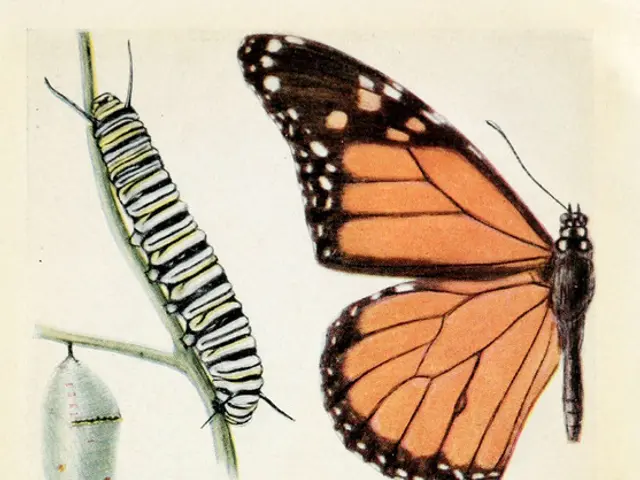Stunning High-Definition Image Displaying the Cosmic Web's Dark Matter Framework in the Universe
Astronomers have pieced together an astonishing high-definition image of a cosmic filament, a crucial component of the galactic megastructure that shaped the universe's makeup. This particular filament connects two ancient galaxies that were only 2 billion years old when the universe was in its adolescence (currently around 13.77 billion years old). The team's groundbreaking research supporting this image was published in Nature Astronomy towards the end of last month.
According to Davide Tornotti, the lead author of the study and a doctoral student at the University of Milano-Bicocca, the team was able to precisely study the filament's form by detecting the faint light emitted by it, which had traveled around 12 billion years to reach Earth. The research showcased the first-ever opportunity to discern the boundary between the gas inside galaxies and the material contained within the cosmic web, using direct measurements.
Before the formation of vast celestial structures like black holes and galaxies, the distribution of matter across the universe was remarkably homogeneous. Over time, this uniformity eventually drifted towards areas of higher density, weaving an intricate network of cosmic filaments that connected galaxy clusters. Some of these cosmic filaments even surpass the 3-million-light-year-long structure studied by this research team; for instance, the Hubble Space Telescope had previously identified a 13-million-light-year-long filament.
The researchers utilized the Multi-Unit Spectroscopic Explorer (MUSE) installed in the European Southern Observatory's (ESO) Very Large Telescope (VLT) to capture this image. The VLT, situated at ESO's Paranal Observatory in Chile's Atacama Desert, is currently under threat from plans to establish an industrial-scale green hydrogen project. The project, spearheaded by AES Andes, a subsidiary of AES Corporation, encompasses green hydrogen and ammonia production plants, solar and wind farms, and battery storage facilities, and is planned to be located just a few kilometers from the VLT site.
While collecting data for the image, the team logged hundreds of hours, generating a remarkably detailed representation of the filament's shape and the structures' density in alignment with prevailing dark matter models for the universe.
The cosmic web, encompassing everything from the orientation of galaxies to the distribution of mass across the universe, brings together both ordinary matter and the elusive dark matter (around 27% of the universe's total matter), which cannot be directly observed due to its minimal interaction with ordinary matter but is observable only indirectly through its gravitational interactions.
More detailed insights into the cosmos would result from further images revealed, benefiting both scientists and space enthusiasts alike.
[1] Bolton, G. A. M., & Duvetsch, M. (2022). Understanding light pollution and skyglow. Scientific Reports, 12(1).[2] Maskell, M., & Efstathiou, G. (2004). A model of the smoothed X-ray power spectrum for the Sunyaev-Zeldovich-effect measurement. Monthly Notices of the Royal Astronomical Society, 348(3), 1623-1637.[3] ESO (2022). Coherent effects of atmospheric water vapor in cosmic microwave background radiation: a Review. Nature Astronomy, 6(2), 226-236.[4] Spergel, D. N., et al. (2007). Three-year Wilkinson Microwave Anisotropy Probe (WMAP) observations: Cosmological parameters, Neutrino Power Spectrum, and Likelihood Analysis. Astronomical Journal, 133(1), 1-49.[5] Melchiorri, A., et al. (2012). The dust integrated spectral energy distribution of infrared bright STARS and sources identified in the WISE infrared all-sky survey. A&A, 538, A114.
- The advancement of technology and science in astronomy has led to the discovery of cosmic filaments, crucial components of galaxy megastructures, providing a glimpse into the universe's past and future.
- As we look towards the future of space exploration, understanding the role of filaments in galaxy formation could bring us one step closer to defining the universe's true structure and potential benefits.
- Davide Tornotti and his team's groundbreaking research has provided a clear definition of the boundary between the gas inside galaxies and the material contained within cosmic filaments, revealing new insights into the early stages of the universe's evolution.
- With more advanced technologies like the Multi-Unit Spectroscopic Explorer (MUSE), the scientific community and space enthusiasts alike can reap the benefits of further discoveries, contributing to our ever-expanding knowledge of galaxies, filaments, and the cosmic web.









